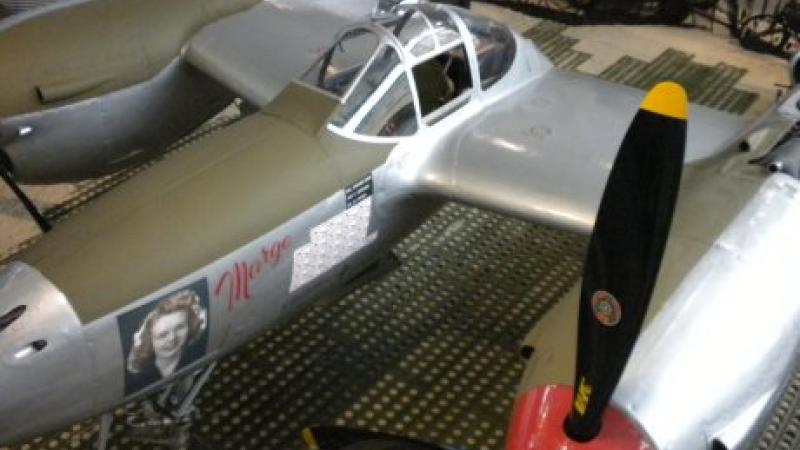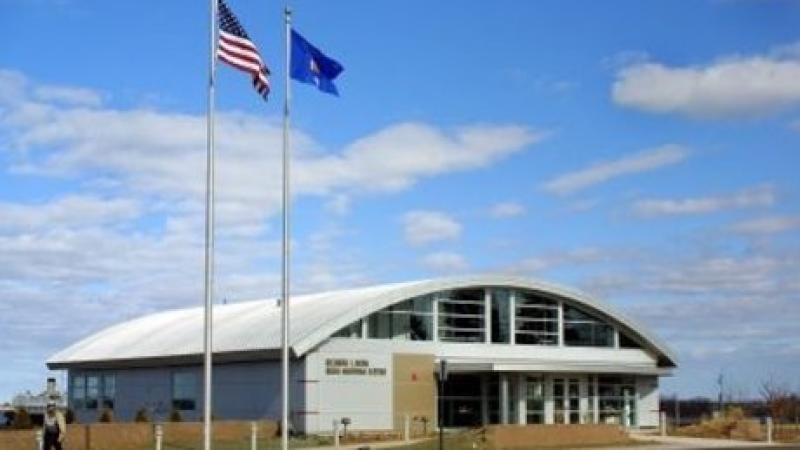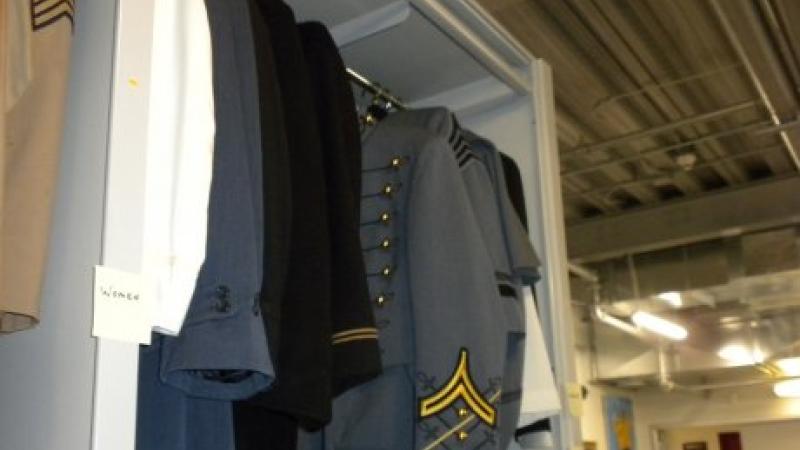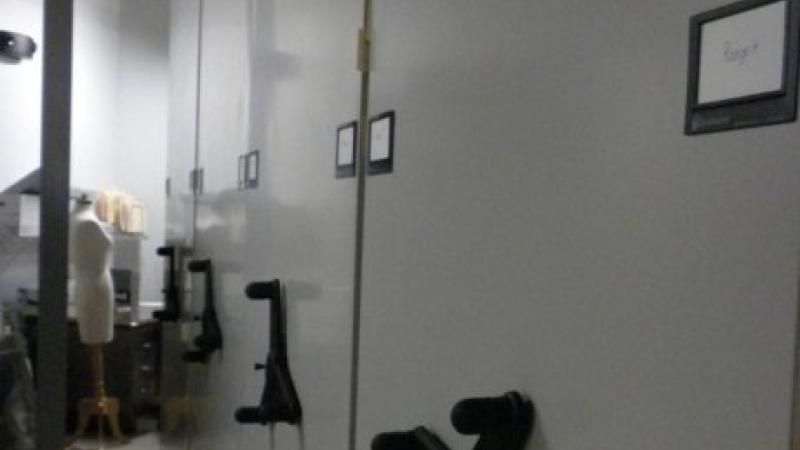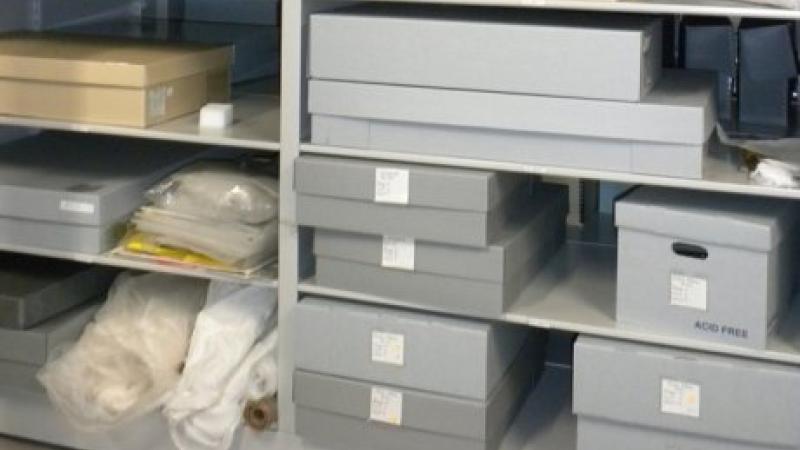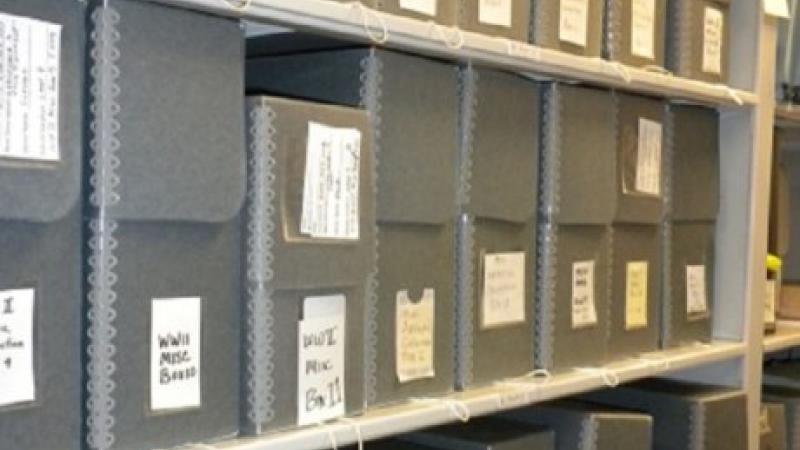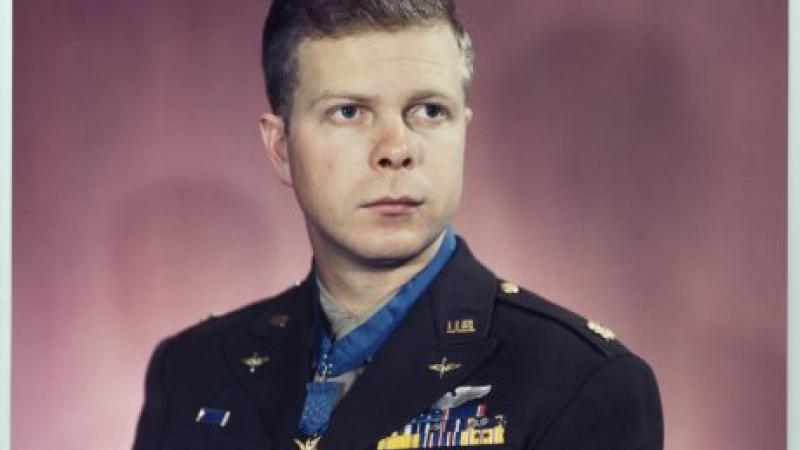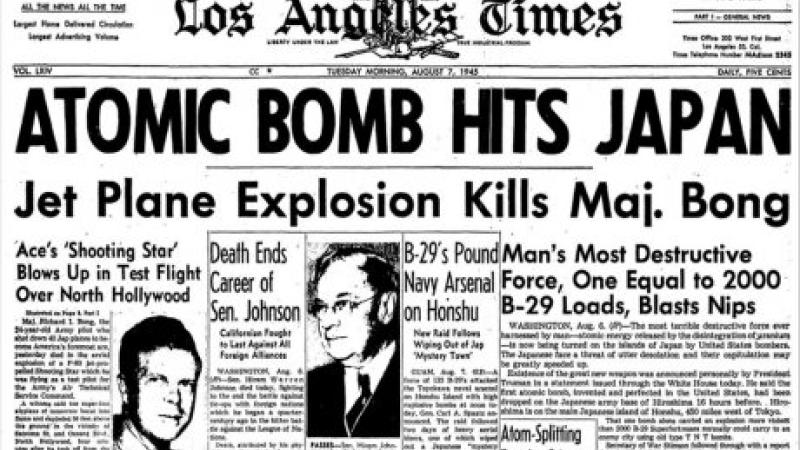50 States of Preservation: The Richard I. Bong Veterans Historical Center in Superior, WI
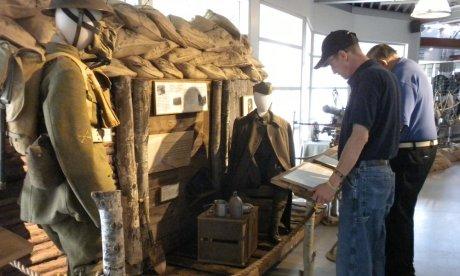
Visitors looking at the Richard Bong Center's newest display, a mock WWI trench.
Image courtesy of the Richard I. Bong Veterans Historical Center

Visitors looking at the Richard Bong Center's newest display, a mock WWI trench.
Image courtesy of the Richard I. Bong Veterans Historical Center
This feature is part of a series we call “50 States of Preservation,” in which we are touring small and mid-sized museums, libraries, historical societies, and other repositories across the country to show how they are helping to preserve the nation’s cultural heritage. Read other entries in the series here.
On Tuesday, August 7, 1945, the Los Angeles Times, like most newspapers across the country, loudly announced “Atomic Bomb Hits Japan.” And like many other papers that day, the Times included a second prominent headline: “Jet Plane Explosion Kills Maj. Bong.” What was the significance of this second event that could possibly command front page attention alongside one of the most consequential events in human history?
The short answer to this question is that Army Airforce Major Richard Ira Bong was America’s top World War II fighting ace, credited with shooting down 40 enemy aircraft, more than any before or since. His name and accomplishments were very well known at the time. Indeed, he had achieved something of a celebrity status before the end of the war, touring Hollywood and rubbing elbows with the likes of Bing Crosby and Jack Benny. Ironically, his deadly crash as a test pilot occurred near the site of this entertainment mecca.
However, the most complete answer to Bong’s significance – and much more – can be found at the Richard I. Bong Veterans Historical Center, in Superior, Wisconsin. Bong was raised in rural Poplar, roughly 15 miles east of Superior, where for many years a memorial, featuring a Lockheed P-38 “Lightning” fighter plane like that flown by Bong, could be seen at the local school. Efforts to restore and secure an indoor location for the plane in the late 1980s coalesced with emerging interests in recognizing the 50th anniversary of World War II, leading eventually to the establishment of the Richard I. Bong World War II Heritage Center, which opened in 2002. At the request of veterans from other wars, the scope and name of the center was eventually changed to its more encompassing identity.
The Richard I. Bong Veterans Historical Center is a remarkable resource for enriching understanding of military history from World War II to the present (as this author can attest from a recent visit). The museum includes a wonderfully designed set of exhibitions and media presentations on American’s involvement in WWII and subsequent international conflicts, with plenty of attention to what was happening on the home front. These exhibits draw from over 10,000 artifacts, including uniforms, equipment, weapons, souvenirs, and other items. The center also houses a military library and archives containing over 3,000 books, personal manuscripts, yearbooks, personal letters and diaries, photographs, scrapbooks, and newspapers. In addition to original letters flight logs, family ephemera, and photographs from Bong and his family, the collection contains abundant personal papers from other, mainly local servicemen and women. Also included are 600 recorded oral histories of military and homefront participants in WWII and subsequent conflicts, including female riveters and welders, a Tuskegee airman, a Japanese-American Nisei soldier, and several Holocaust survivors.
Three Preservation Assistance Grants for Smaller Institutions made to the Richard I. Bong Veterans Historical Center since 2004 have supported a preservation assessment, purchase of preservation supplies, and an assessment of storage furnishings that led to the installation of compact shelving for the museum’s artifacts. Noting the impact of these awards, Briana Fiandt, Curator of Collections for the Bong Center states “the assessment that we received from the NEH gave us a solid understanding of what our storage needs were. So when the time came to actually purchase the new compact storage system, we were able to use the assessment as a foundation and build from there. It was incredibly helpful to have that background work done already.”
The Bong Center is a prime example of highly important humanities resources and activities located in sometimes-unexpected corners of the nation. And it illustrates as well as any museum can how the fabric of human history is interwoven with local, national, and international threads. NEH is pleased to have helped make a positive difference in the stewardship of the museum’s collections.
In every state, NEH supports organizations that preserve humanities collections. Preservation Assistance Grants for Smaller Institutions (PAGs) fund projects that help safeguard photographs, letters, documents, prints, moving images, sound recordings, maps, drawings, artworks, textiles, furniture, and artifacts, making them available for future generations. These collections help researchers, educators, and members of the public better understand the complex stories of the various cities, towns, and tribal groups that make up our nation.
Since 2000, NEH has made nearly 2,000 Preservation Assistance Grants to small and mid-sized organizations to preserve and care for their humanities collections. In all 50 states, the District of Columbia, and Puerto Rico and the Virgin Islands, PAG awards have funded preservation assessments, purchase of shelving, environmental monitoring equipment, and preservation supplies, and training for staff. Organizations in all states and U.S. territories are eligible to apply, and the program encourages applications from those new to NEH. The next application deadline Preservation Assistance Grants for Smaller Institutions is May 1, 2018. If you have any questions about this grant program, please contact us at preservation@neh.gov or 202-606-8570.
